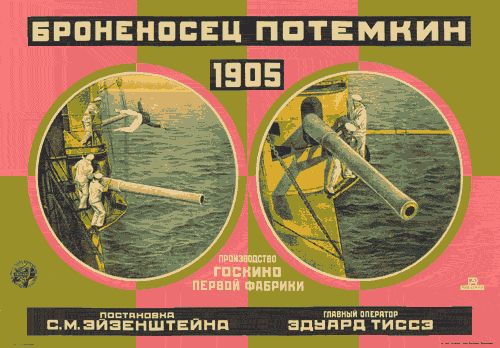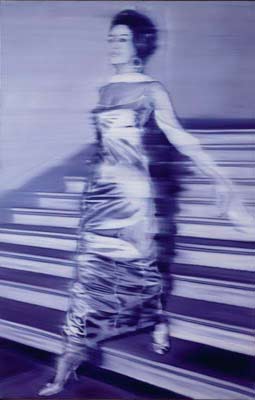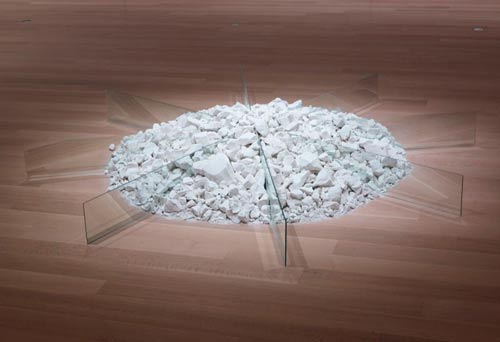“The future is but the obsolete in reverse,” wrote Nabokov. Both the future and the obsolete are to varying degrees deficient in images representing them. Traces of the obsolete can often be found in attics, archives, junkyards, museums, sunken ships and memories. “Traces” of the future, however, are intangible and images of the future can only be imagined or projected. Imagining future events often creates a web of obscure correspondences to past events and images already seen.
I’ve recently come across various references to Sergei Eisenstein’s Battleship Potemkin. These scene descriptions and details about the film have started to accumulate and have contributed to my forming images of the film in my mind before ever having seen it. Like the traces of long-lost objects these vague images of an imagined film, often based on photographs, paintings or entirely different film scenes, have begun to take on the qualities of an indistinct memory of a film seen long ago.
Seeing Alexander Rodchenko’s poster for the film lead me to imagine the battleship as a hybrid of the submarine from Crimson Tide and the U-boat from the German film, The Boat. The scene from the latter in which one crewmember is thrown overboard from the submarine’s tower echoes the illustration of the man falling overboard in the poster.
Still from The Boat
The screaming face in Francis Bacon’s Study after Velazquez’s Portrait of Pope Innocent X has now became the face of a nurse in the imagined Potemkin, after I read that Bacon was inspired by an image of a screaming nurse in the film.
The Odessa Staircase scene, which is perhaps the most quoted scene from the film, had begun to take shape in my mind long before knowing what occurs in the scene. For a long time I imagined it was similar to a film fragment I had seen as a kid. The scene portrayed a staircase covered in a crimson carpet in a Russian palace. The colour of the carpet was so overpowering that the people descending the staircase were lost in this field of red, as if floating in a sea of crimson. One of these people was a woman dressed in white, who in a remote way resembled the woman in Gerhard Richter’s painting, Woman Descending a Staircase.
It was only later I learned that the staircase scene depicted the massacre of Odessans by the Tsarist soldiers and that it was a black and white film. The red-carpet version of this scene then began to be supplanted by other images of the staircase. My uncle once showed me a photograph of the staircase, depicting my aunt in a bright summer dress, standing on the steps against a backdrop of tourists, the Odessa seaport and a cruise ship.
The Odessa Staircase
The staircase was also filmed in a video piece I have a vague recollection of seeing, in which two actors dressed in black descended the stairs slowly. As this video was shown at a screening which also included one of Rodney Graham’s video pieces (City Self / Country Self) these two works seem to have merged in such a way that I can’t think of one without recalling the other.
Still from City Self / Country Self
Richter’s Woman Descending a Staircase can be found in the Chicago Art Institute in a room that is accessible via a large spiral staircase. The same room also houses Robert Smithson’s Chalk/Mirror Displacement, which belongs to a series of works he called “nonsites” and is made of chalk taken from the “site” of a chalk quarry in Surrey. Smithson stated, “What you are really confronted with in a Nonsite is the absence of the Site… a ponderous and weighty absence”.
It seems the ponderous and weighty absence of the future with its unseen films creates a blank surface ideal for projecting the half-remembered, the indistinct and the imagined. These projections though, are as fragile as images on a screen. The virtual Battleship Potemkin I have created with memories and projections will only linger as long as it is not destroyed and made obsolete by the act of watching the actual film.






